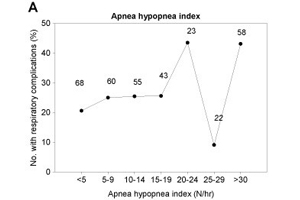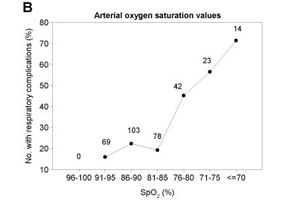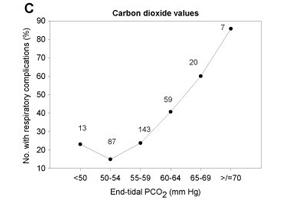T&A Triage with or without Preoperative Polysomnography Clinical Pathway – Inpatient and Outpatient Specialty Care
T&A Triage with or without Preoperative Polysomnography Clinical Pathway – Inpatient and Outpatient Specialty Care
Review Polysomnography Results
- Polysomnography is a test to diagnose sleep disorders.
- It records brain waves, oxygen level in the blood, heart rate, breathing, and eye and
leg movements. - When interpreting results the Apnea/Hypopnea Index (AHI) and oxygen desaturation levels
are used to indicate the severity of obstructive sleep apnea.
Interpreting Polysomnography Results
Apnea/Hypopnea Index (AHI)
Number of events per hour, calculated as:
| Apneas No airflow for 10 secs or longer |
+ | Hypopneas Shallow breathing where airflow reduced by at least 50%, lasting 10 secs or longer |
Normal AHI is < 1.5/hr
Gas Exchange
Preoperative SpO2 nadir < 80% or peak CO2 > 60 mmHg are more consistent predictors of postoperative respiratory complications than apnea-hypopnea indices.
Oxygen nadir is the lowest oxygen saturation a patient drops to [normal oxygen nadir (SpO2) > 92].
CO2 peak < 55 mmHg or > 50 mmHg for no more than 25% total sleep time (the latter is a better measure as CO2 can peak after a single sigh)



Graphs show the percentage of patients with respiratory complications at:
- Each level of apnea hypopnea index
- Arterial oxygen saturation nadir
- Peak end-tidal CO2
Reference